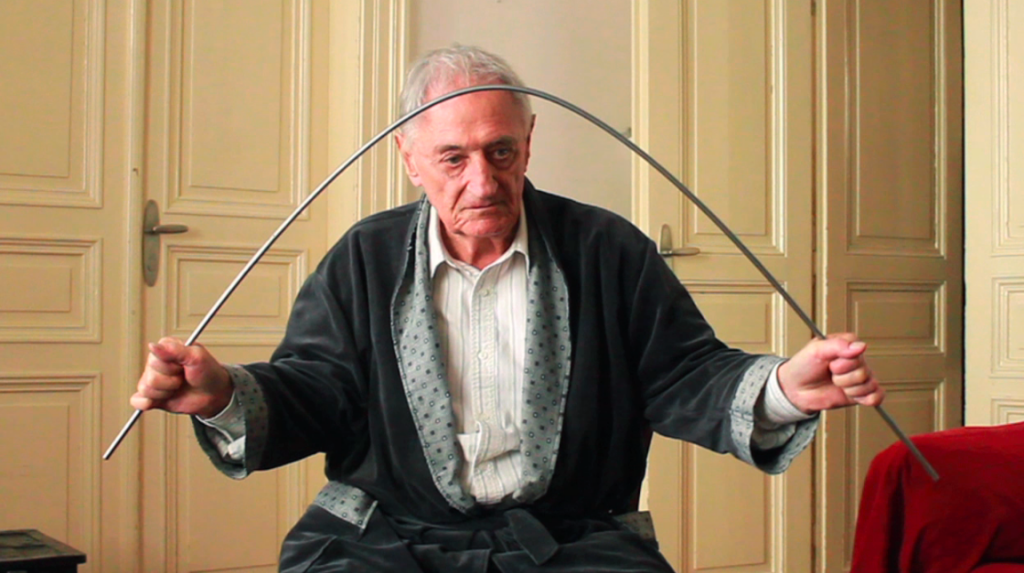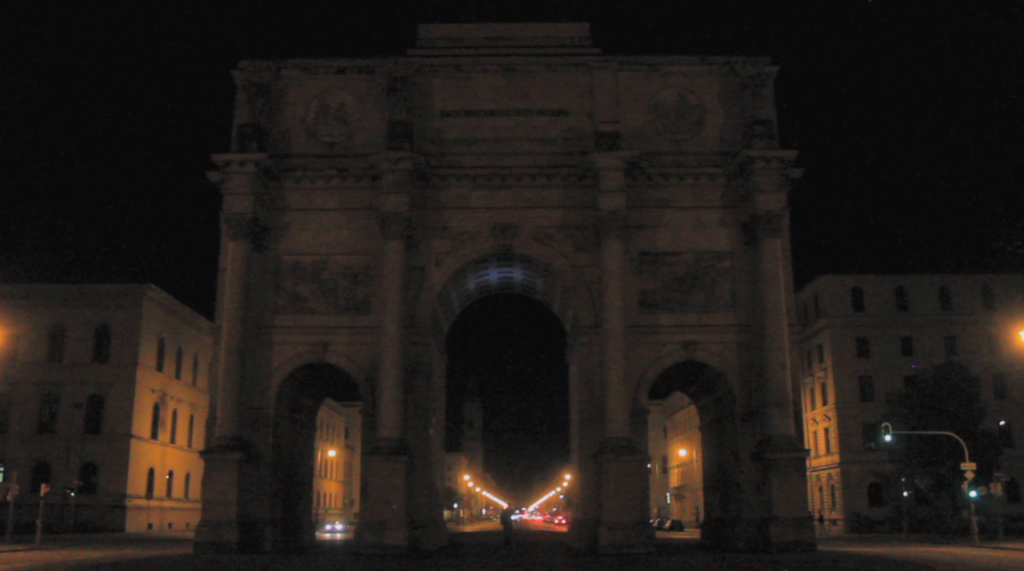Některé věci unikají / Some Things Pass / 2012
|
Henry Wool, Arcus Triumphalis, or, The Analysis of Vaulting, Edinburgh: Isaac and Sons 1755, p. 122–123 “Chapter XLI: On the Arc as the Essence of Elegance: Hogarth has shewn in his treatise, there wouldnever be an elegant line if it were not for the ability of giving it a smooth and regular curve. However, what he forgot to mention is that the arc is the first and fundamental element of any elegant line. It is the expression of real human art as well as the power of human will to endue the material things around us with a form corresponding with the ideal notion we have defined in our minds. Almost any animal can destroy or deform by brute force that which does not exceed its weight and height. However, only man can use his powers to obscure the traces of his acts. The final result is more perfect than anything to be seen in the wild. For even pebbles on the seashore which have been abraded for centuries do not show as regular a curve as the results of human skill. It was not in vain that the ancient Romans immortalized their military successes by erecting arches.” Quotation by Jakub Steskal The exhibition Some Things Pass is an account of things that happen. One often reflects on their constellation, though only being able to perceive their mutual relationships. Its internal sense consists in the effort to capture these things in time as well as in the question of why grasp them in the first place. The line of thought of searching for eternal truths has merged with the artist’s account of his relationship to a person close to him; in the context of history as well as formal aspects. The basic motive is the principle of the straight line and human will which keeps changing it. In the first room, there is a closed object reminding of a wall carrying formal spatial information about where one stands. The optical illusion of horizontal lines initiates the mental movement of the spectator. A parallel of the line can be seen in the photograph of an old man’s hands changing its shape. The adumbrated “triumphal arch” further appears in a video where the light trace follows the internal empirical shape of the arch, reviving its historical reminiscence. At the same time, the spectator passes a similar arch which represents both the physical and mental effort of an old man who transforms the imaginary horizon. In Jan Pfeiffer’s installation, the spectator encounters the theme both physically, passing through space and perceiving the transformation of shape, and mentally while observing the very virtualization of the image in front of him. This image tells a parable of human will, the legacy of fathers and the values that have changed history.
Henry Wool, Arcus Triump halis, or, The Analysis of Vaulting, Edinburgh: Isaac and Sons 1755, s. 122–123 „Kapitola XLI: O zaoblení jako základu elegance: Jak ukázal ve svém spisu Hogarth, elegantní linie nevznikne bez schopnosti vnutit jí plynulé a pravidelné zaoblení. Zapomněl ale dodat, že oblouk je prvním a základním elementem každé elegantní linie. Projevem skutečného lidského umění a zároveň moci lidské vůle je vnutit hmotným věcem okolo nás formu, která koresponduje s ideální představou, jež jsme si vytyčili v mysli. Skoro každé zvíře dokáže hrubou silou zničit či zdeformovat to, co je nepřesahuje hmotností ani velikostí. Jenom člověk však dokáže své síly využít k zastření stop svého konání. Výsledek je pak dokonalejší než cokoli, co je k vidění v divoké přírodě. Neboť i po staletí obrušované oblázky na břehu moře nevykazují tak pravidelné zaoblení jako výsledky lidské zručnosti. […] Ne nadarmo staří Římané zvěčňovali své válečné úspěchy vztyčením oblouků.“ Jakub Stejskal Výstava Některé věci unikají je výpovědí o věcech, které se dějí. Člověk často uvažuje o jejich konstelaci, i když je schopen vnímat jen vzájemné vztahy. Vnitřním smyslem je ona snaha tyto věci zachytit v čase a i otázka, proč je vlastně chtít uchopit. Myšlenková linie o hledání věčných pravd se prolnula ve výpověď umělce o vztahu k blízké osobě, v kontextu tvarosloví historie i formálních prvcích. Základním motivem je princip přímky a lidská vůle, která ji mění. V první místnosti se nachází uzavřený objekt připomínající zítku, který nese formální prostorovou informaci o tom, kde člověk stojí. Na základě optické iluze horizontálních linek dochází k mentálnímu pohybu diváka. Paralela linie se ukazuje i ve fotografii, na které ruce starého muže mění její tvar. Předznamenaný „vítězný oblouk“ se dále objevuje ve videu, kde světelná stopa obchází vnitřní empirický tvar oblouku a oživuje tak jeho historickou reminiscenci. Zároveň divák sám prochází obdobnou branou, jenž je vyjádřením fyzického i mentálního úsilí starého muže, který přetváří pomyslný horizont. V instalaci Jana Pfeiffera se divák ocitá tématu jak fyzicky blízko, když prochází prostorem a vnímá proměnu tvaru, tak zároveň pozoruje vlastní virtualizaci obrazu před sebou. Tento obraz vypráví o podobenství lidské vůle a odkazu otců, které mění dějiny. .
|






